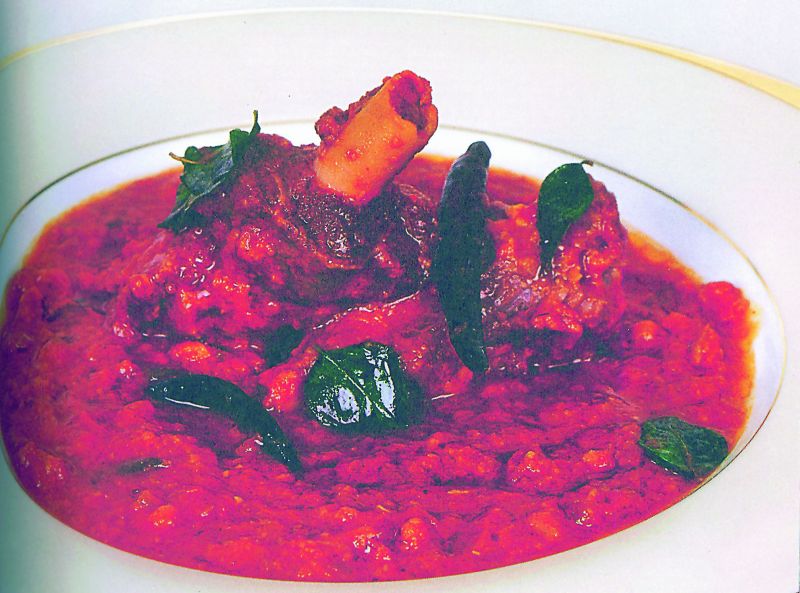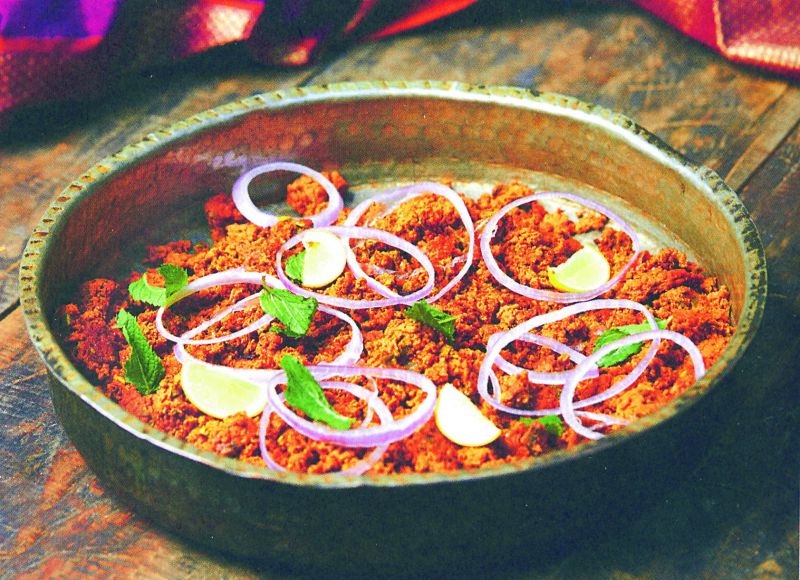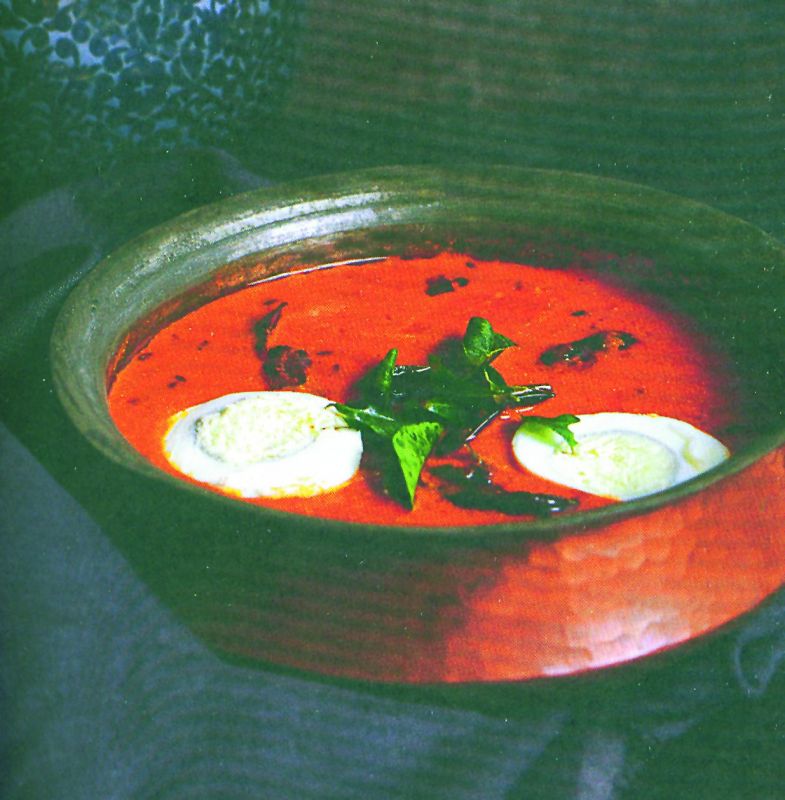A spoonful of Hyderabad
In her book saffron and pearls, Doreen Hassan shares some of the most relished hyderabadi delicacies.

Putting this book together, gathering recipes and stories, has really been a journey back in time for me and the family. What made the process of having conversations with family and friends, recounting memories and arguing over anecdotes, gathering photographs and revising the past even more special is the fact that in 2016, my husband, Peter and I marked 45 years of marriage. Like every couple, we’ve had our ups and downs but, together, Peter and I have managed to make our lives happy and build a world full of love, warmth, friendship and good food. We keep an open house — everyone who steps into our home is always made to feel welcome and is asked to have a meal with us. And this has been important to us because hospitality and generosity are among the many gifts we have inherited from our Hyderabadi lineage.
When we moved to Delhi in 1976 as a young couple with two small children, it was not always possible to host elaborate meals but we did the best we could with what we had. It’s funny and emotional for me to think back to that time because I did not even know how to cook! Peter would order in meals, or we would depend on the household staff to help us. And now when I effortlessly draw up menus, get in the kitchen to make elaborate dishes and receive compliments for our table, I often remember the young woman I used to be who didn’t even know how to make tea.
I was born in Secunderabad into a Goan Christian family, the Fernes. My grandmother, Armin, whom I called Mama, was a fabulous cook. She had mastered the best of Goan dishes — prawn curries, fish curries, vindaloo, sorpotel and so much more. We never ate Hyderabadi food; at the most, my aunt would make a biryani and raita to take with us whenever we went on a picnic. We have a home filled with our three children, Anisha, Nihal and Sahil, their lovely spouses — our son-in-law, Vijay and our daughters-in-law, who are both called Neha; and our six gorgeous grandchildren, Rhea, Raoul, Anaia, Aliana, Anahi and Riaan. We are a family that loves to cook, loves to eat and loves to share our world with everyone we know.
The Hassan are a very multi-cultural clan, and our home is the same — we celebrate almost every religious festival because we have family members who are Christian, Muslim, Hindu and Sikh. The tentwallah who comes home to set things up for us once said to me — “You celebrate everything from Eid to Diwali to Christmas on the same scale. I have never seen a home like this!” Which is why writing this book is so important for me. All the recipes in it come from members of our family. Because we often host people for meals, I have cooked these recipes countless times over the years, and they have won us precious friendships and priceless memories. The stories pay homage to our families, friends and well-wishers and especially to Hyderabad, the city that we carry in our hearts wherever we go.
Nalli Gosht
Ingredients
2 kg lamb shanks (about 15 pieces)
2 litres mutton stock
½ kg yogurt
150 gm onions, chopped
100 gm onions, finely sliced
100 gm Kashmiri chilli paste
75 gm garlic cloves
1 gm saffron strands
100 ml oil
1 bunch coriander leaves, finely chopped
1 2” piece ginger, cut into strips
8 green cardamoms
5 1” cinnamon sticks
5 cloves
5 bay leaves
5 drops vetiver
8 tablespoon ginger-garlic paste
4 teaspoon kewda water
4 teaspoon rose water
1 teaspoon garam masala powder
1 teaspoon black pepper powder
1 teaspoon green cardamom powder

Method
Fry the chopped onions until very crisp. Remove onto a plate lined with absorbent paper.
Fry the garlic cloves until they turn a deep brown. Grind these along with the fried onions with a little water to form a paste.
Heat oil in a pan and add the whole spices. When it splutters, add in the finely sliced onions and fry them to a golden brown. Then, add the ginger-garlic paste and the lamb shanks first. Mix well and add salt and chilli paste. Let the meat cook until the spices coat it — this should take about 15 minutes.
Mix in the browned garlic and onion paste and yogurt. Leave it on the low heat for 15-20 minutes. Pour in the stock and seal the pan with dough. Lower the flame completely and let it cook until the mutton is tender. This should take 20-30 minutes. Check if the meat is soft, and if it is not, return the pan to the stove for another 15-20 minutes.
Strain the stock, remove the lamb shanks and set them aside.
Pour the stock into a thick-bottomed pan and return to the stove; let it reduce to the thickness you would prefer for the gravy. Check the seasoning and add the lamb shanks back in. Sprinkle with cardamom powder, garam masala powder, kewda water, rose water, vetiver and saffron. Mix well to combine and take the pan off the flame. Serve garnished with chopped coriander leaves and ginger strips.
Dhum Ka Kheema
My husband’s younger sister Chintara, whom we call Chintu, is an excellent cook. She used to help their father in the kitchen when she was young and when I got married, we became friends.
Chintu was working as a teacher at the time and was not married, so we all lived together. Whenever we had people over for dinner, she would cook the meal but go to bed early because she had to go to work the next day. I would serve the meals. When I started cooking in Delhi, I would ask Chintu for family recipes. She taught me what she knew and it helped that Peter used to buy her sarees sometimes, as a thank you. Chintu lives in Canada now and while writing this book, I found many old notebooks in which I had written her recipes. This is one of those and is one of her specialties.
The baked version
Ingredients
1 kg minced meat
¼ kg onions, sliced fine
¼ kg thick yogurt
½ cup oil
8 cardamoms
8 cloves
2 1” cinnamon sticks
4 heaped tablespoons gram dal
2 ½ tablespoons coconut powder
2 heaped tablespoons poppy seeds
1 heaped tablespoon chilli powder
1 teaspoon turmeric powder
1 teaspoon black cumin seeds
1 teaspoon all-spice
Salt to taste
For the marinade
2 heaped tablespoons papaya, ground into a paste with salt
2 heaped tablespoons ginger-garlic paste

Method
Prepare the marinade by mixing papaya and ginger-garlic pastes together. Place the meat in a deep bowl and apply the marinade; keep covered in the fridge for six hours. When you are an hour or 30 minutes away from the meat being ready, start prepping the spices and masalas.
Heat oil in a pan and fry the onions until they turn golden brown. Decant them onto absorbent paper. Let the oil cool and pour into a bowl. Keep it aside — you will need this oil later.
Roast the poppy seeds and coconut powder separately. Grind together into a fine paste, using as much water as you need. Just remember not to make the paste too thin. Grind cinnamon, cloves, turmeric, cardamom, black cumin seeds and chilli powder together and keep aside. Take the marinated kheema out of the fridge and transfer into a dish that is oven-proof. Mix in the prepared masalas and pastes and then the yogurt. Pour over the oil that you fried the onions in. Check the seasoning — you may want to add more salt — and keep aside, covered, for 30 mintues.
Preheat the oven to 1500 celsius. Bake the kheema until the top is brown and the marinade has dried up. This usually takes 45 minutes to an hour, check it at the 35 mark. You may need to baste the meat in a greased pan on the stove to allow the marinade to be completely absorbed, and give the dish a very dry consistency, which is ideal.
Serve garnished with white onion rings, slivers of lime and mint leaves.
Tamatar Ka kut
Ingredients
5 kg red tomatoes, cut into quarters
5 eggs, hard boiled and shelled
1 bunch curry leaves
10 tablespoons sesame seeds
5 heaped tablespoons gram flour
5 tablespoons coriander seeds
3 tablespoons red chilli powder
3 tablespoons cumin seeds
2 tablespoons ginger-garlic paste
2 tablespoons fresh heavy cream
Salt to taste
For the baghar
½ cup oil
10 dry red chillies
8 flakes garlic
2 sprigs curry leaves
1 teaspoon cumin seeds

Method
Pulse the gram flour in a blender and pass through a sieve to ensure there are no lumps. On a dry tawa or any other flat pan, roast sesame seeds, coriander seeds and cumin seeds. Grind to a fine paste, using a little water. Set aside.
Place the tomato quarters in a large pan, and mix in the red chilli powder, powdered seeds, ginger-garlic paste and curry leaves. Do not add any water — the tomatoes will release enough gravy. Cook on a medium flame, stirring at intervals, until the tomatoes break down and melt. All the ingredients should have blended well together and resemble a thin soup or gravy. Once this is done, take the pan off the flame and let the gravy cool.
Drape a length of clean white muslin over the mouth of another pan, of the same size, and strain the gravy through. Add the powdered gram flour to it and return to the flame; cook until the consistency is that of a thick soup.
For the baghar
Heat oil in a small frying pan, until it is smoking. Toss in red chillies and garlic. When these turn dark brown, add cumin seeds and curry leaves. Fry until nearly charred. Take off the flame and pour into the tomato gravy and cover immediately.
To serve
Decant the gravy into a deep dish. Halve the hard boiled eggs, and garnish the gravy with these. Swirl the cream over and serve immediately.
— All receipes are from the book Saffron and Pearls by Doreen Hassan
Nalli GoshtDhum Ka KheemaTamatar Ka kut
